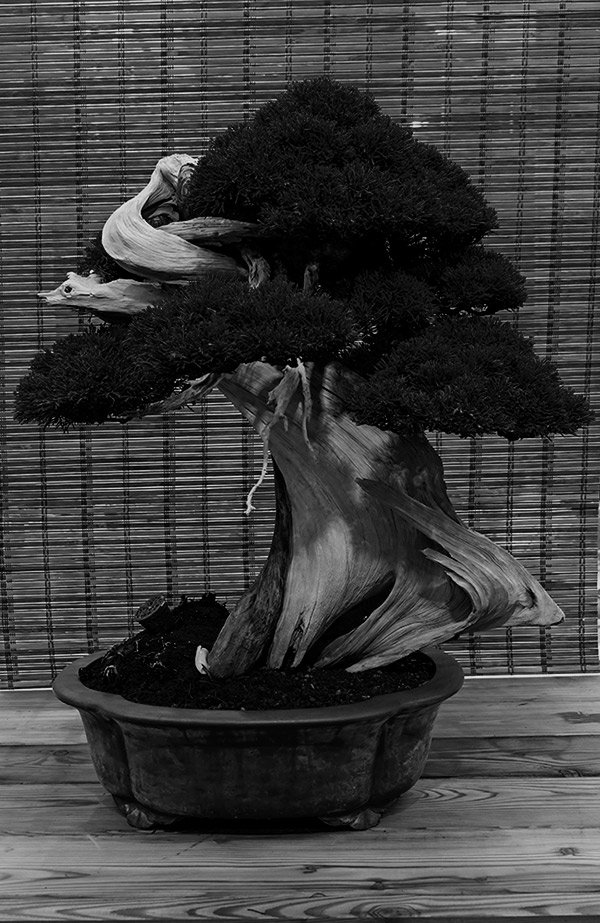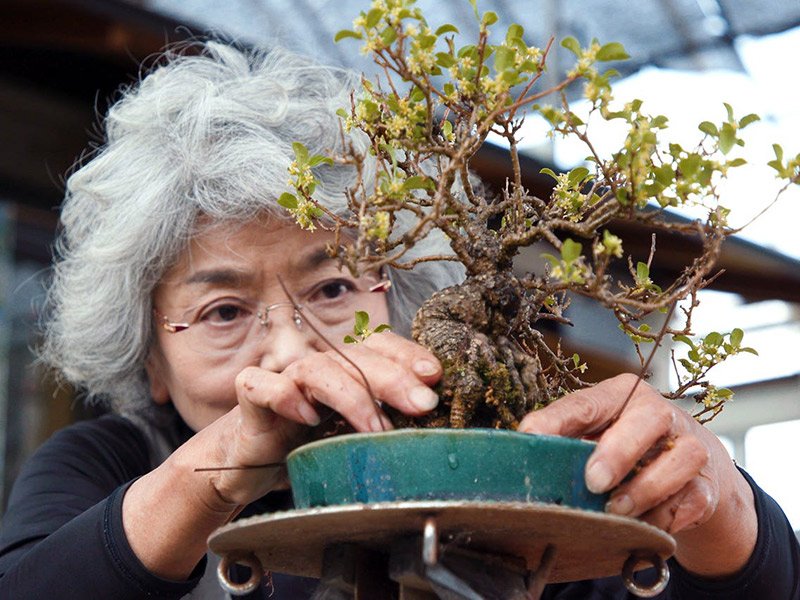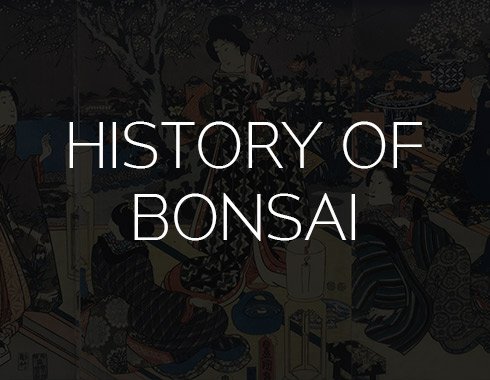LEARN
What is Bonsai?
Bonsai is the art of shaping trees into potted miniature marvels that represent majestic full-size trees on a landscape. It takes painstaking attention and artful pruning over many years to create the effect. Shaping nature in this way demands everlasting devotion without the prospect of completion.
The tree’s growth is restricted by years of pruning, wiring, re-potting, and grafting, and the plants need to be checked on and often watered every day. The skills required to grow a Bonsai plays a big part in their value.
The time and devotion this process requires is unlike almost any other form of artwork. While the work is almost a form of sculpture, the plants are living things and will always react in their own way.

Bonsai are beautiful trees and shrubs that are not genetically dwarfed; they are dwarfed through methods of trimming branches and roots and training the branches by binding them with a wire. The art of Bonsai commenced in China approximately 1,000 years ago when trees were refined in wooden containers, earthenware pots, and trays and trained to form natural shapes. However, Bonsai has been mostly practiced and developed in Japan.
Bonsai can be passed down to generations as prized possessions of families, given the ability of Bonsai to live up to a century or more. In Japan, people display their Bonsai in alcoves or small tables inside their living rooms as a custom and later place them back outside. High-quality bonsai varieties are generally resilient, which allows them to be placed outdoors year-round whenever there are mild winters.
A crucial element to the art of Bonsai is selecting the proper container to nurture them. Bonsai pots are earthenware the majority of the time, either with or without a colorful glaze on the exterior. The pots can be square, oval, lobed, octagonal, or rectangular and have more than one drainage hole at the bottom. The bonsai containers are cautiously selected to complement color and proportion with the bonsai tree. If the bonsai container is oval or rectangular, the tree is planted according to the distribution of the branches, still not halfway between the center point and one side. In containers that are round or square, the Bonsai is positioned slightly off-center. The cascade types, however, are planted towards the opposite end of the container whey they project from. When on display, Bonsai are taught to have a front, or viewing eye, directed towards the viewer.
Even though there are considerable variations of categories, the miniature Bonsai are identified as Shohin. The smallest of the Shohin is Keishi and Shito, which can range in sizes up to 2 inches in height (5-7 cm), and beginning from cuttings or seeds, they can take three to five years to acquire a quality form. These specific bonsai trees can live through several decades.

The small Bonsai called Mame, which can be 2 to 6 inches in height (7 to 15 cm), need about five or ten years to train. The medium Bonsai usually vary from about 7 to 15 inches in height (20 to 40 cm), and can be up to 2 feet tall (60 cm), and formed in as soon as three years. The larger Bonsai, which are called Dai, can be up to 47 inches tall (120 cm) and need at least two or more people to carry them.
Depending on the level of root growth, Bonsai needs to be repotted about every one to five years. Gradual root pruning during implantation in subsequent years reduces the size of the soil ball so that the tree can eventually reach the desired small and narrow container. Water is generally given on a daily basis to the Bonsai and fertilizer is also used while the clipping of the shoots is executed during the growing season.

One of the hardest skills to master when growing these trees is patience. The Bonsai keeps changing by how I love and manage it. Therefore Bonsai is always unstable. I give my love to these trees without steadiness. The effort I put in now will bring results three to five years later.
Chiako Yamamoto
FIRST FEMALE BONSAI SENSAI (MASTER)
Find out more...

Cold Stratification
The very important process of breaking the dormancy of your seeds to prepare them for germination.
Beware of fake seed sellers claiming to have SUPER RARE Bonsai seeds with bright, fluorescent colours.
Visit our shop to browse our selection of classic Bonsai seeds, tools, pots and sets to begin your journey.



